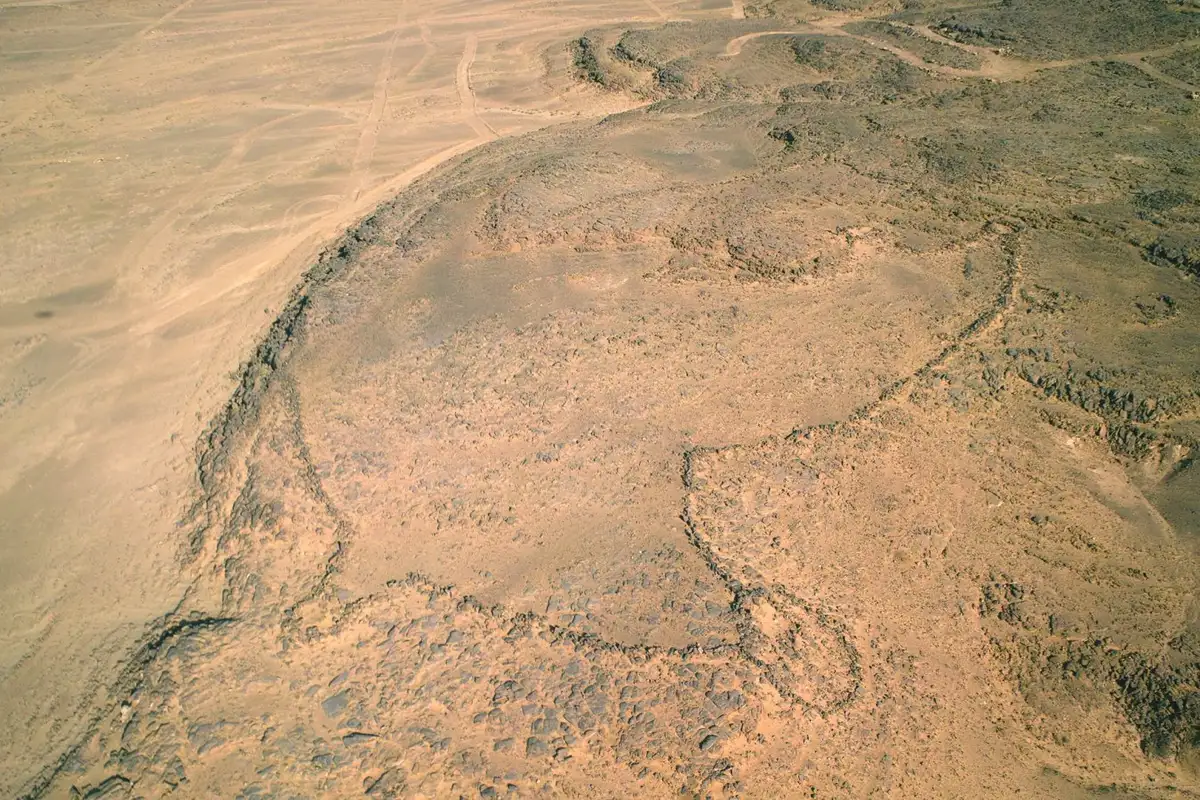By: April Carson

The oldest known architectural plans have been discovered by archaeologists in Saudi Arabia and Jordan. These plans date back over 3,000 years. Researchers suggest that these plans were used to construct some of the first large-scale buildings and monuments in the region.
According to a recent study published on Wednesday in the scientific journal PLOS One, stone slabs contain highly precise engravings that describe large-scale constructions used to channel wild animals like gazelles into enclosures where entire herds could be killed.
The hunting traps used during the Stone Age are called kites and were discovered about 9,000 years ago in the Middle Eastern deserts by aircraft pilots who noticed their distinct shape.
The stone slabs, which were discovered in a region known as the Zarqa River Basin in Jordan and the Wadi Sarrar area of Saudi Arabia, have ancient carvings that describe in detail the technical details of two different kite designs.
Large structures called desert kites were built in human history to drive animals towards a corral surrounded by deep pits. These kites had converging walls that were hundreds of meters to 5 kilometers long and were up to 4 meters deep.
Archaeologist Wael Abu Azizeh, who leads the Jerusalem/Palestinian territories office at the French Institute of the Near East and co-authored the study, explained that the massive size of these structures makes it difficult to comprehend their construction, layout, and shape when examining them from ground level.
The researchers' findings suggest that ancient humans had the capacity to plan projects on a large scale, and the stone slabs indicate that they were also able to use complex mathematics and geometry in their planning.
Kite structures are abundant in northern Saudi Arabia, southern Syria, and eastern Jordan, totaling over 6,000 findings in the Middle East and central Asia. Despite this, there has been limited research on this archaeological phenomenon.
The precise illustrations of the large kites indicate that the trap builders had a high level of expertise in understanding spatial concepts and were skilled at handling intricate spatial data. Abu Azizeh stated that this level of cognitive ability is extremely remarkable.
Archaeologists recently found two engraved slabs in Jordan and Saudi Arabia. One of the artifacts was discovered by Abu Azizeh at a former settlement in the Jibal al-Khashabiyeh area in Jordan, which has eight hunting kites. The other artifact was discovered by Saleh al-Jahdali in the Wadi Sarrar area of Saudi Arabia.
According to him, he quickly recognized that the markings on the 80-centimeter-long (2.6-foot-long) stone, which is estimated to be 7,000 years old, indicated the presence of a kite in the vicinity.
Abu Azizeh said that the idea of the nearby kites came to him suddenly and quickly, and he immediately thought of drawing a kite. It matched the engravings on the stone, and they measured it to ensure its accuracy.
A bigger engraved stone that was nearly 4 meters (13 feet) long was discovered by his colleagues in Jebel az-Zilliyat region in Saudi Arabia. The stone had two different kites engraved on it, which were approximately 120 meters (394 feet) away from each other. It is believed that this engraving is from 8,000 years ago.

The researchers concluded that the engraved stone slabs were used as a toolkit for kite building. They suggest that these ancient builders had an advanced understanding of mathematics and geometry, which allowed them to plan large-scale traps.
The study found that the engravings depicted the kite remains with precision in terms of their shape, layout, and proportions. The alignment of the engravings with the cardinal directions was also noted. The Saudi Arabian engraving indicated that the kites were 175 times larger than the engraving itself, while the Jordanian kite was portrayed on a slab that was 425 times smaller than its actual size.
The deep pits on the stones that funneled the animals before slaughtering were represented larger than normal, which Abu Azizeh explained was because they were important as the actual location where the animals were killed. If they were made to scale, they would hardly be visible.
The findings of this study suggest that the ancient people responsible for these designs may have had sophisticated skills in mathematics and spatial representation, which would be necessary to accurately represent such large areas.
How to Beat the Different Types of Addiction
-----------
April Carson is the daughter of Billy Carson. She received her bachelor's degree in Social Sciences from Jacksonville University, where she was also on the Women's Basketball team. She now has a successful clothing company that specializes in organic baby clothes and other items. Take a look at their most popular fall fashions on bossbabymav.com
To read more of April's blogs, check out her website! She publishes new blogs on a daily basis, including the most helpful mommy advice and baby care tips! Follow on IG @bossbabymav
-------------------
LOOKING TO INVEST IN 4BIDDENKNOWLEDGE? CLICK HERE TO MAKE A CONTRIBUTION AND GET INVOLVED WITH 4BIDDENKNOWLEDGE TV AND BECOME PART OF THE MOVEMENT!
Are you a member of the 4BK TV Channel? If not, you should want to become one!!
On 4bk.tv, you can Expand your mind and explore your consciousness in our collection of workshops by Billy Carson, including Remote viewing - Ancient History - Anomaly Hunting, and how to Manifest the things in life you've always desired!




